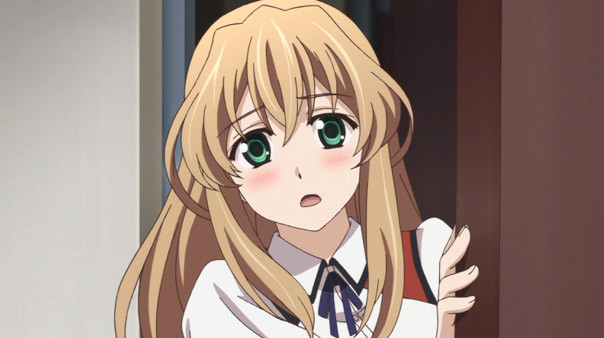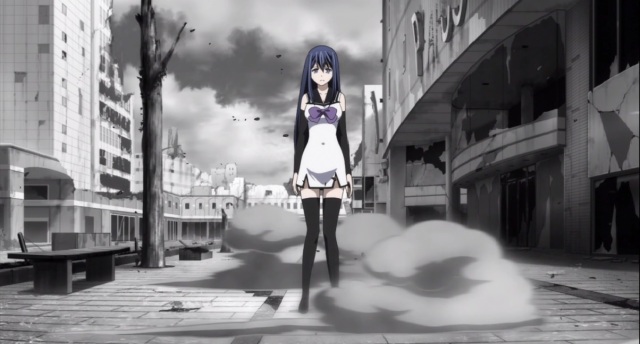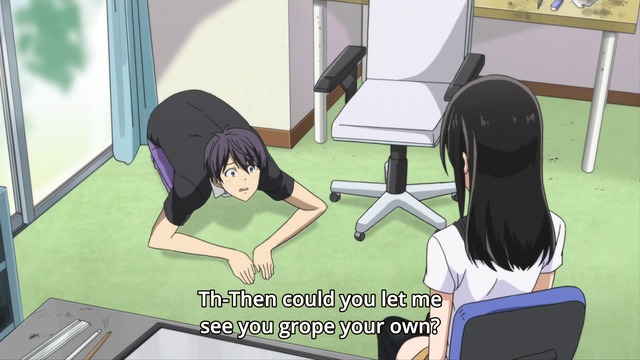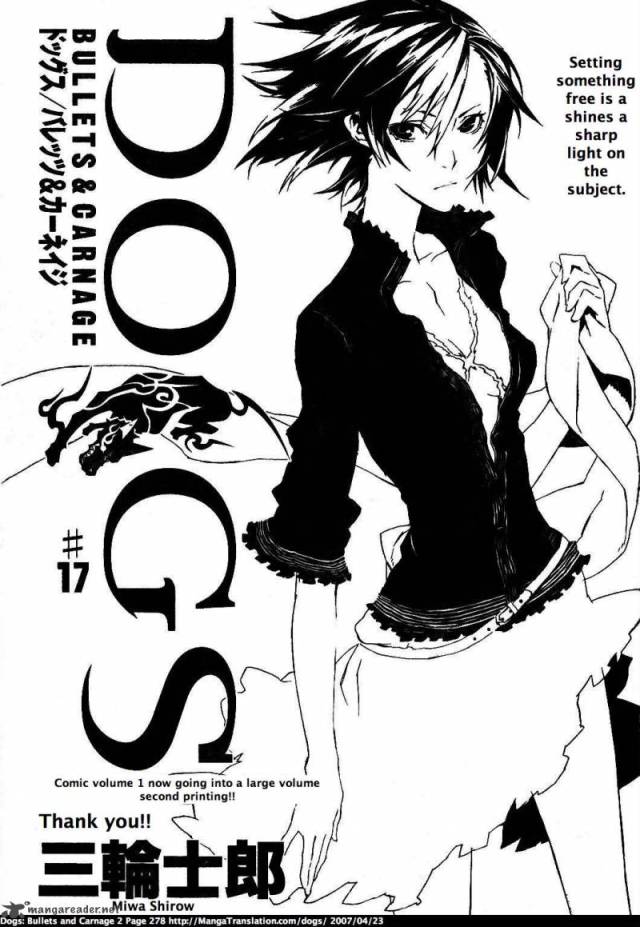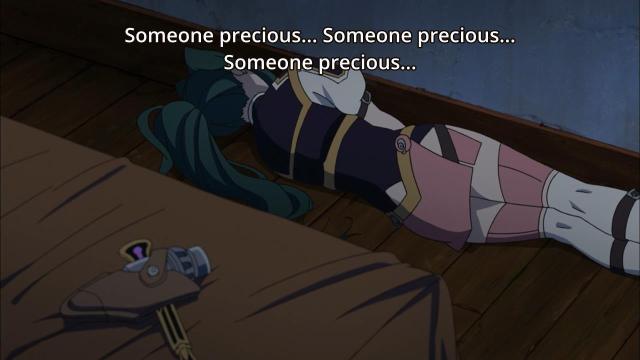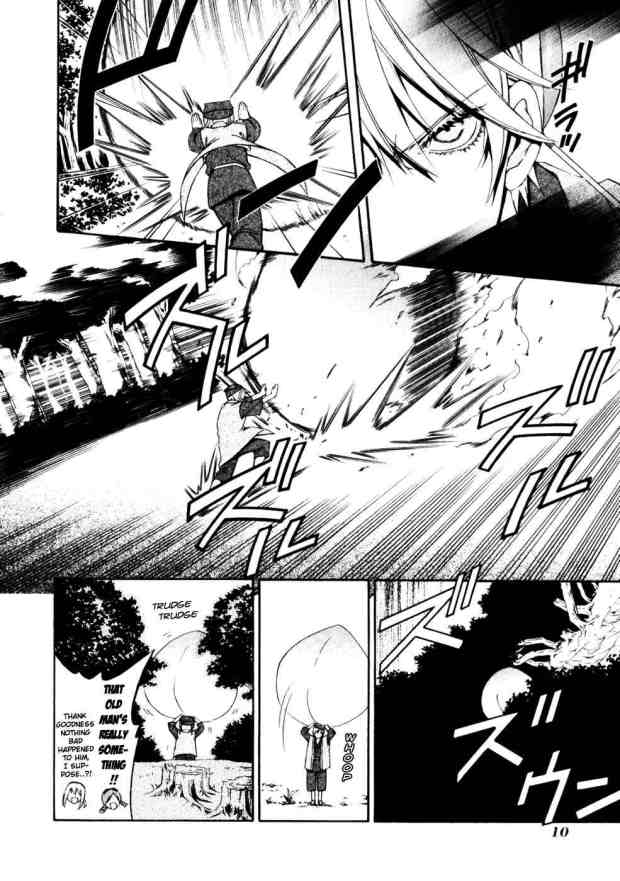Remember how I promised that other half of manga reviews a very long time ago? Here they are! My promise of that time and the one made just a few hours ago doubly bound me to write these reviews, and I hope that they shall be to your pleasure. If not, may you enjoy your displeasure.

Picture of good ol’ Revy.
The titles which I propose to review are Genshiken, Kurenai, Sengoku Youko, and Hanako to Guuwa no Tera. The last one is a horror manga which I highly enjoyed. Horror stands as one of my least favorite genres nowadays. In the past, I used to get a kick out of watching Hammer Films’ Dracula films and werewolf movies of all sorts. It was fun commenting on how the movie makers would mess with the lore attached to these creatures. I loved the Gothic style of the vampire genre, and the fright of a big bad wolf coming at one with your only hope being a well placed silver bullet. Now, horror movies are overly gory, and I find myself less intrigued by them.

Christopher Lee as Dracula
Hanako to Guuwa no Tera by Sakae Esuno attracted me from the start because they melded horror with the private eye genre. Our hero runs an agency dedicated to ridding the world of harmful “allegories.” These allegories are based in Japanese folklore or the fads of popular culture. The interesting thing about the monsters here are that they derive from people’s unbalanced states of mind. The detective, Daisuke Asou, has collected a couple of allegories in his line of work, some of which give him power. One, named Hanako, acts as his information gatherer. Our story begins when Kanae Hiranuma seeks Asou’s help in ridding an allegory which has been haunting her: the axe man under the bed. For this reason, she has not been able to sleep in days and is petrified to stay in her own room. Doesn’t it sound childish? This haunting begins a long, happy relationship for the two of them.

Don’t worry. It’s available in English.
This story really shines in the way the author delineates relationship between the characters. This draws one into all the struggles which they endure against allegories, and the wide variety of opponents keeps the reader turning pages. This manga has ended in 2010, and consists of just nineteen chapters. The manga also really shines in creating a likable couple. Too many series have rather annoying couples, which make one wish that the author had not bothered with a love interest. But, Kanae is quite capable, and there is the right amount of tension between the two to make for an interesting dynamic. I recommend this better than average manga to you horror fans out there.

Now to review the most problematic manga for me: Genshiken. As many of you know, this manga focuses on the otaku lifestyle of the club members of a club known as Genshiken, which means Society for the Study of Modern Visual Porn–I mean, Culture. My biggest problem with this manga must lie in that I am not otaku enough to relate to any of the characters. As a matter of fact, Saki is my favorite character, and she only joined Genshiken so that she could hang out with her lover, Kousaka. I can’t help but feel sorry for her in that Saki must endure the porn and ero-game loving ways of her partner. Now, this makes for great comedy, but a guy has absolutely no excuse for using pornography if he has a lover. After all, is not having the thing better than a mere vicarious experience? Anyway, Saki herself brought up this complaint. She has the patience of a saint when it comes to dealing with the idiosyncrasies of her boyfriend. (Not that I approve of sex before marriage, but such relationships at least offer the chance of leading to marriage, while pornography is engaging in an empty activity.)

At any rate, a college freshman named Sasahara is brought into the group and enmeshed into their otaku lifestyle of ero-games, anime, conventions, porn, and video games. The story often succeeds in being hilarious; but there are too many problems of identification for me, and their preoccupation with porn irritates me. So, I won’t be getting the second omnibus volume.

Even bald men deserve to be loved.
Kurenai is a real joy for me to read. The fights are very well done, and the humor driven off of the harem situation is most amusing. Women can’t seem to help falling for the strong, modest, reliable Shinkuro. But, the author presents us with some very likable characters, even if some characters are rather stock–heck, all of them might be stock characters to tell you the truth; but, that only speaks to how well the humor and plot are executed. This show also uses a favorite trope of mine: a young man is in charge of taking care of girl much younger than himself. (Perhaps the reason for my predilection lies in that I have a sister 10 years younger than myself, so identification is easy.)

Shinkuro works as a dispute mediator–more like a dispute finisher considering most disputes are ended with his fists–for a capable, mysterious woman named Benika. At the start of the manga, we already know that he’s been taking care of Murasaki, a young girl from a powerful, incestuous family. You see, she’s been destined to marry his older half-brother. She warms up to Shinkuro because of his gentle and strong nature. However, her family comes after her, and Shinkuro must display all his martial skill to finally free Murasaki from this fate. Then, the action turns toward a criminal syndicate, which decides to make Shinkuro himself a target.

Besides the fights, this manga excels in delineating the relationships between the characters, i.e. Shinkuro and his ever expanding harem. The manga manages to balance the romance and slice of life chapters very well with the action packed ones, which means that the reader is never bored. Everything works to keep the reader turning pages, and I look forward to each new chapter of this ongoing manga.

Lastly, I was fortunate to find the manga Sengoku Youko. This is another ongoing manga, but it’s set in fuedal Japan as a historical fantasy. This manga is a very character driven work, the fights and the plots are rather simplistic. The characterization goes a long way to make up for these flaws though. I must comment that the setting feels much like Inuyasha: youkai and samurai are juxtaposed to each other during the Sengoku Era. Also, traveling is a major part the action, and the side characters all display prejudices of some kind or another, human-hating youkai or youkai-hating men.
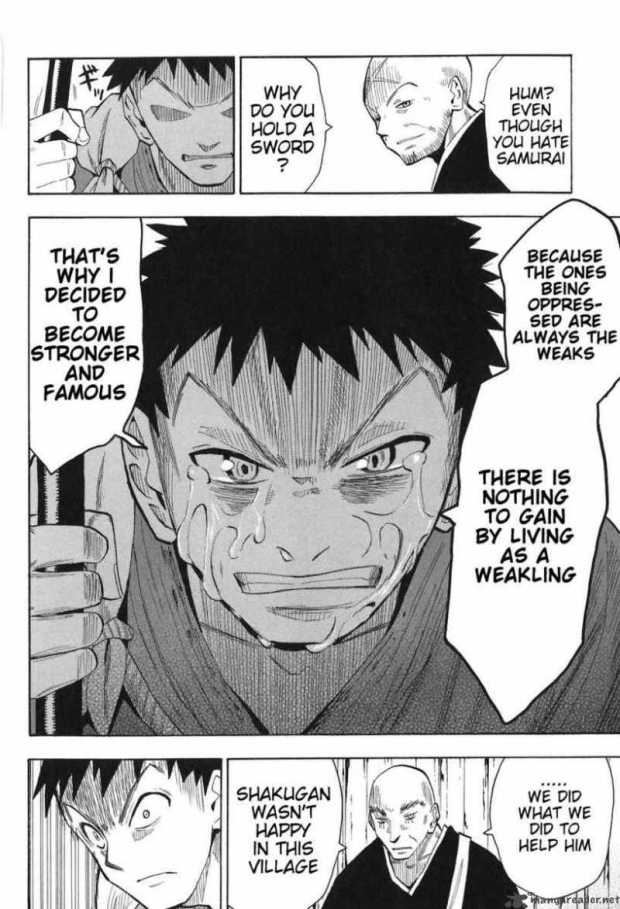
Our heroes, Jinka, Tama, and Shinsuke, meet while the first two were on a bandit hunt. Tama unsuccessfully tries to convince the bandits that they are leading an immoral life. At which point, Jinka, a hanyou, is forced to beat them all down. Jinka has a strong prejudice toward human beings, while Tama, a fox youkai, believes humans and youkai must be judged on an individual basis. Their adventures lead to them picking up one more party member and discovering an insidious plot by Tama’s mom and her human lover. This is a great manga for light reading, especially if you liked Inuyasha.

I hope that you enjoyed these reviews. Pressing work will deter me from blogging for at least a week.








